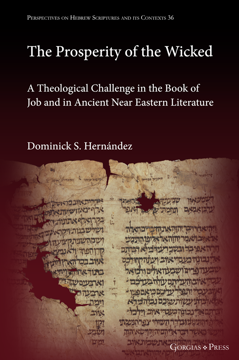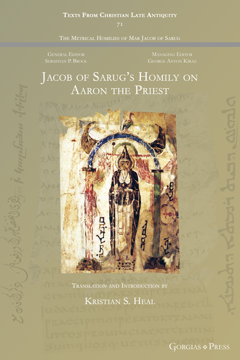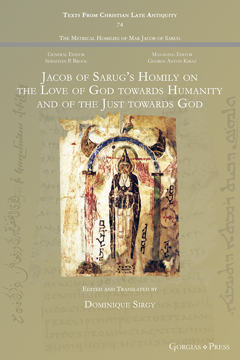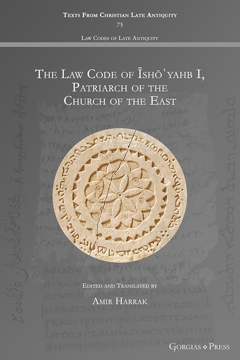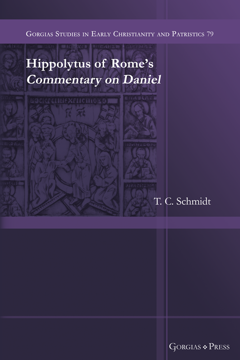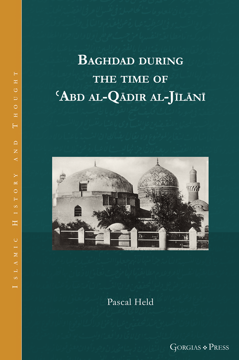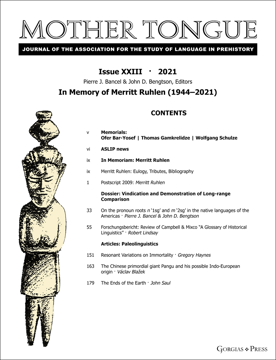The Quran. Key Word Distribution, Correlations and Collocation Frequencies. Vol. 5
Adjectives, Nouns, Proper Nouns and Verbs
By Elie Wardini
Series: Gorgias Islamic Studies 16
ISBN: 978-1-4632-4422-4
The aim with the present series, The Quran: Key Word Distribution, Correlations and Collocation Frequencies, is to present key data related to the lexicon of the Quran, in terms of Key Word distribution and lexical associations. The digital text used for this purpose is the Uthmani text of the Tanzil Quran Text. This text is widely used. All vocalized Arabic text is quoted unaltered in any shape or form from the Tanzil text. Unvocalized Arabic text and transcriptions are my own. In this series, each Key Word, here adjectives, nouns, proper nouns and verbs, is presented together with the following key data: Degree of Concentration, Weighted Distribution, Correlations and Collocation Frequencies. The Key Words are always referenced by their lemma and are sorted alphabetically according to Arabic and UNICODE order. In lemmatizing the words, no attention has been given to the semantics of each word. Only on rare occasion have similar forms of words or proper nouns been separated in order to avoid confusion. In assigning each word a lemma, Classical dictionaries and Quran commentaries, as well as modern Quran dictionaries have been consulted. Deciding on these is not always obvious, since classical dictionaries and commentaries sometimes either disagree or present divergent variant readings or root and lemma attributions. It is our hope and aim that this series contributes to Computational Linguistics and Digital Humanities in general, and Computational Linguistics research on the Quran in particular.
$199.00 (USD)
The Prosperity of the Wicked
A Theological Challenge in the Book of Job and in Ancient Near Eastern Literature
ISBN: 978-1-4632-4424-8
Does Job convincingly argue against a fixed system of just retribution by proclaiming the prosperity of the wicked—an assertion that distinctly runs contrary to traditional biblical and ancient Near Eastern wisdom? This study addresses this question, giving careful consideration to the rhetoric, imagery, and literary devices used to treat the issue of the fate of the wicked in Job’s first two rounds of dialogue, where the topic is predominantly disputed. The analysis will glean from related biblical and non-biblical texts in order to expose how Job deals with this fascinating subject and reveal the grandeur of the composition.
$114.95 (USD)
Jacob of Sarug's Homily on Aaron the Priest
Translation and Introduction by Kristian S. Heal
Series: Texts from Christian Late Antiquity 71
ISBN: 978-1-4632-4427-9
Jacob of Sarug's homily on Aaron the Priest, focusing on the period leading up to and including the death of Aaron described in Numbers 20:22–29.
$32.00 (USD)
The Stanzaic Poems of Jacob of Serugh
A Collection of His Madroshe and Sughyotho
Series: Texts from Christian Late Antiquity 72
ISBN: 978-1-4632-4430-9
Although the verse homilies of Jacob of Serugh are well known to lovers of Syriac literature, his stanzaic poetry, in the form of madroshe and sughyotho, have been largely forgotten. This volume contains twenty-five poems preserved in their complete form and attributed to Jacob in old manuscripts of the sixth/seventh to ninth/tenth century preserved today in the British Library, but largely originating from Deir al-Surian in Egypt.
$59.00 (USD)
Jacob of Sarug's Homily on the Love of God towards Humanity and of the Just towards God
Edited and Translated by Dominique Sirgy
Series: Texts from Christian Late Antiquity 74
ISBN: 978-1-4632-4432-3
Jacob of Sarug's homily chronicles the unravelling of God's love in sacred history and the inability of humankind to return God's love and grace.
$28.00 (USD)
The Law Code of Īshōʿyahb I, Patriarch of the Church of the East
Edited and Translated by Amir Harrak
Series: Texts from Christian Late Antiquity 75
ISBN: 978-1-4632-4434-7
During the 6th century AD, Īshōʿyahb I, Patriarch of the Church of the East, produced a code of law dealing with questions raised by Bishop Jacob of Darai in the Gulf. Perennial Church issues include priestly conducts, ecclesiastical rankings, and ordinations. Legal matters for the faithful concern wills, marriages, vows, lending at interest, and swearing. Most interesting are names of church architecture that the Code gives, including bema, diaconicon, and qestroma, terms that are still used today.
$39.00 (USD)
Hippolytus of Rome's Commentary on Daniel
ISBN: 978-1-4632-4436-1
In his Commentary on Daniel, the earliest extant Christian commentary, Hippolytus interprets the deeds and visions of Daniel against the backdrop of contemporary Roman persecution and eschatological expectation, thus providing much information about Christian affairs in the early third century. Throughout the commentary Hippolytus further discusses his distinctive Logos theology and also makes mention of various liturgical practices evolving baptism, anointing, the celebration of Easter and perhaps the date of Christmas.
$37.00 (USD)
Baghdad during the time of ʿAbd al-Qādir al-Jīlānī
By Pascal Held
Series: Islamic History and Thought 29
ISBN: 978-1-4632-4438-5
A study of the life and background of ʿAbd al-Qādir al-Jīlānī, putative founder of the Qādiriyya order, investigating the sources for his life and attributed works. The book seeks to elucidate the ideas of al-Jīlānī, and to formulate a picture of the most prominent trends of pious and mystical thought in Baghdad during the twelfth century, providing a cultural and geographical angle to the study of Islamic mysticism and piety.
$115.00 (USD)
Mother Tongue (XXIII)
(XXIII) 2021
Edited by Pierre J. Bancel & John D. Bengtson
Series: Mother Tongue 23
ISBN: 978-1-4632-4441-5
Journal of the Association for the Study of Language in Prehistory.
$55.00 (USD)
On This Day (August)
The Armenian Church Synaxarion (Yaysmawurkʿ)
Edited and Translated by Edward G Mathews Jr
Series: The Armenian Church Synaxarion 8
ISBN: 978-1-4632-4443-9
The Armenian Church Synaxarion is a collection of saints’ lives according to the day of the year on which each saint is celebrated. Part of the great and varied Armenian liturgical tradition from the turn of the first millennium, the first Armenian Church Synaxarion represented the logical culmination of a long and steady development of what is today called the cult of the saints. This volume, the first Armenian-English edition, is the eighth of a twelve-volume series—one for each month of the year—and is ideal for personal devotional use or as a valuable resource for anyone interested in saints.
$79.00 (USD)

